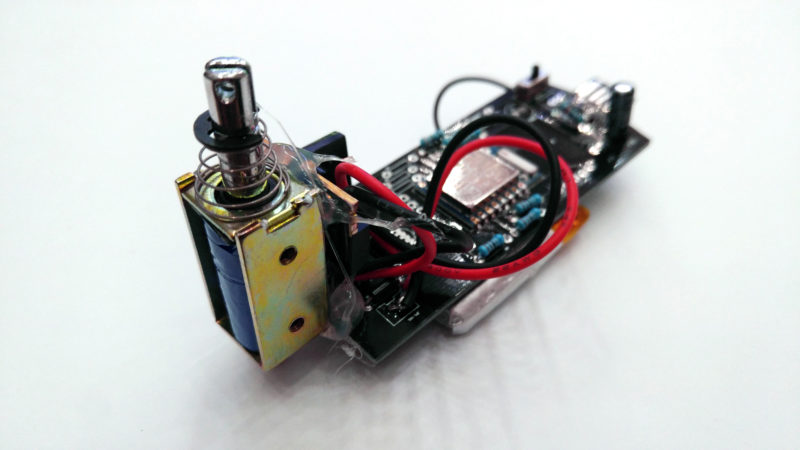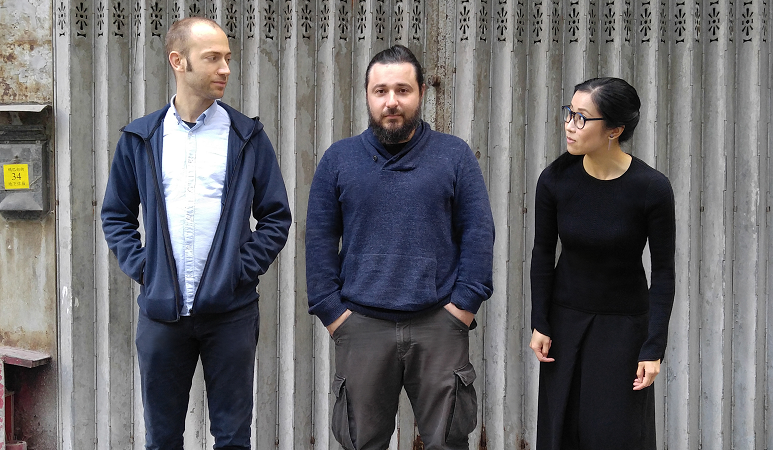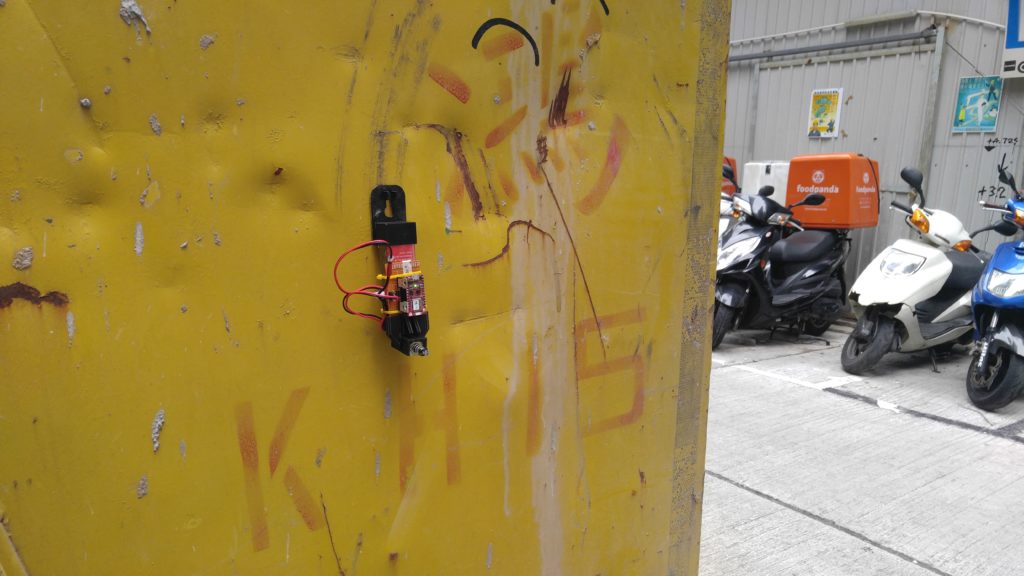Music Tech Series: How To Build Your Drum Machine
Sound Swarm, an abstract and mechanical drum machine that plays a solenoid off the surface that it fixes upon, is borne from the three creative minds from Dim Sum Labs with the objective to explore the progression and translation between the analogue and the digital.
Sound Swarm, an abstract and mechanical drum machine that plays a solenoid off the surface that it fixes upon, is borne from the three creative minds from Dim Sum Labs with the objective to explore the progression and translation between the analogue and the digital.

A Sound Swarm device created by a group of friends borne from Dim Sum Lab
At the upcoming Sónar Hong Kong festival, the founders of Sound Swarm will be running a 2-hour workshop allowing one to explore, fuse and assemble the inner workings of their very own Sound Swarm device. Dim Sum Labs tells us how sound is mechanically developed and what drives them to create such a device.
Q: What is Sound Swarm and what is it made of?
Sound Swarm began as an art project, inspired by the sounds created by drumming on surfaces with your fingers. It evolved into an autonomous entity that interacts and creates noises by attaching onto surfaces and objects, turning them into percussion instruments. Sound is produced with a solenoid (a cylindrical coil of wire acting as an electromagnet). The solenoid impacts the surface, thus creating sound. The back of this device has an attachment, an interchangeable suction cup, magnet or velcro strap, and by fixing it to our surroundings, it becomes an artificial entity or a parasite, and a tool that is only limited by the user’s creativity.

Soundswarm attends Sonar Hong Kong to give drum machine making masterclass.
Q: How do we describe this creation to a DJ?
It’s a mechanical drum machine, that you get to build by yourself from scratch. It is a hybrid product—between the digital and physical, something that bridges between the space-obtrusive drum kit and the coldness of an entirely digital sequencer. Although Sound Swarm’s user interface remains digital, the novelty is that it involves the physical components that you react to, by allowing everyone to build their own version themselves, but also react to any surface (or purpose). In a way, how people would argue about the richness of the sound of vinyl, this mimics that philosophy by creating resonance with our environments, and asking, “what is, or can be a drum?”.
Q: This is pretty experimental. What are you trying to achieve here?
Other than pushing the boundaries of what constitutes as an instrument, we’re creating a tool where it’s purpose is up to the interpretation of its user—will you use it as a drum machine, or a metronome, or a tattoo gun…? So it’s a question of how people interact with technology.
Q: How do we see such creation being used in the future?
We had some discussion about how the next phase is to be more integrated with our urban environments, but you’ll just have to wait and see.
Q: How can audience at Sonar engage with this creation?
The Sound Thing is connected to your mobile (or laptop, or tablet) via wifi (without downloading any apps) and we’ll direct you to the onboard interface, where you can have the familiar drum machine function, by setting the bpm and beat pattern. Another function has it sync with your touch, so when you tap the screen, the machine will hit. Finally, there is a not-so-secret function of copy-and-pasting drum tabs into the interface, and multiple machines (so, a [sound] swarm) will each react to the hi-hat, kick, snare, and whatnot accordingly.

The mechanical drum machine is an experimental art project borne from a group of three consisting an artist, an architect and a software engineer
Q: How does each of your profession and/or skill contribute to the creation of Sound Swarm?
When we start with “What happens when an engineer, an artist and an architect walk into a bar?” (respectively, Lionello, Manolis and Michelle), we mean that this all comes together because of our overlapping traits and abilities. So for Sound Swarm in particular, Lionello will spend more time on the hardware, while overlapping with Manolis on aspects of software. Then Manolis and Michelle will overlap on design, while Michelle also manages and pulls it all together to make it happen.
Our natural roles definitely have an impact from what we normally have as professions–Lionello has an electrical engineering/computer science background, spending most of his time of VR, IoT, blockchain, and the like. Manolis has a Fine Arts background, and currently running the “Innovation Lab”, an R&D department at a multinational marketing firm. Michelle has an architectural background, devoting herself to building buildings and teaching design at the university.




